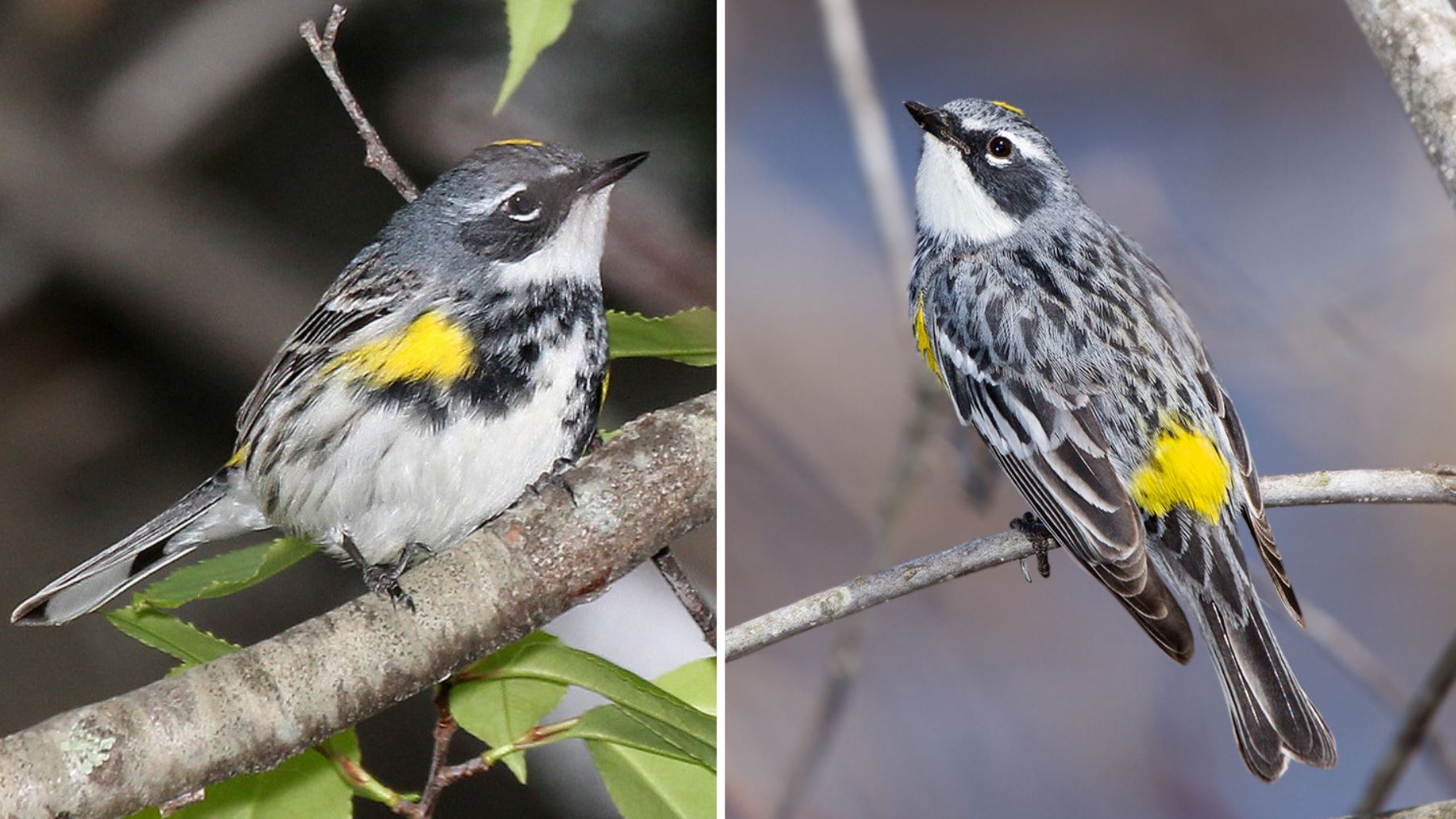
A delightful combination of yellow, black, and white encompasses the body of a very cute but deadly hunter.
Meet the Yellow-rumped Warbler
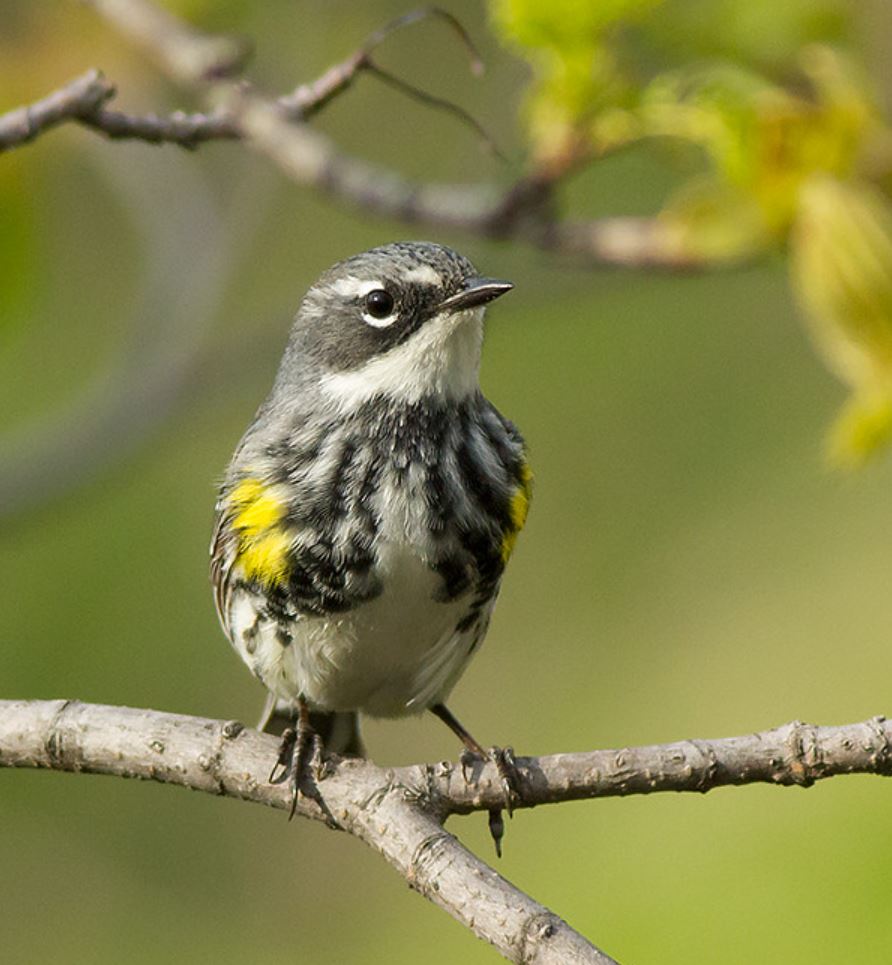 “myrtle warbler” (cropped) by zenbikescience is licensed under CC BY 2.0.
“myrtle warbler” (cropped) by zenbikescience is licensed under CC BY 2.0.
The yellow-rumped warbler (Setophaga coronata), or myrtle warbler is a widespread North American bird species, commonly observed throughout the continent. The yellow-rumped warbler (Setophaga coronata) varies in appearance across its subspecies groups, with two major ones being the coronata group (myrtle warbler) and the auduboni group (Audubon’s warbler), each displaying unique characteristics. Despite the differences, all subspecies share the distinctive yellow rump that gives the species its name. Within the myrtle warbler group, breeding season adult males have gray backs with dark streaks, while females have contrasting brown backs. Another distinguishing feature is the cheek color, with males having black cheeks and females sporting brown or gray cheeks. During summers, both male forms, myrtle and Audubon’s, display streaked backs of black on slate blue, white wing patches, a streaked breast, and striking yellow patches on the crown, flank, and rump. This striking appearance has led to the species being affectionately nicknamed “butter butt” among birdwatchers.
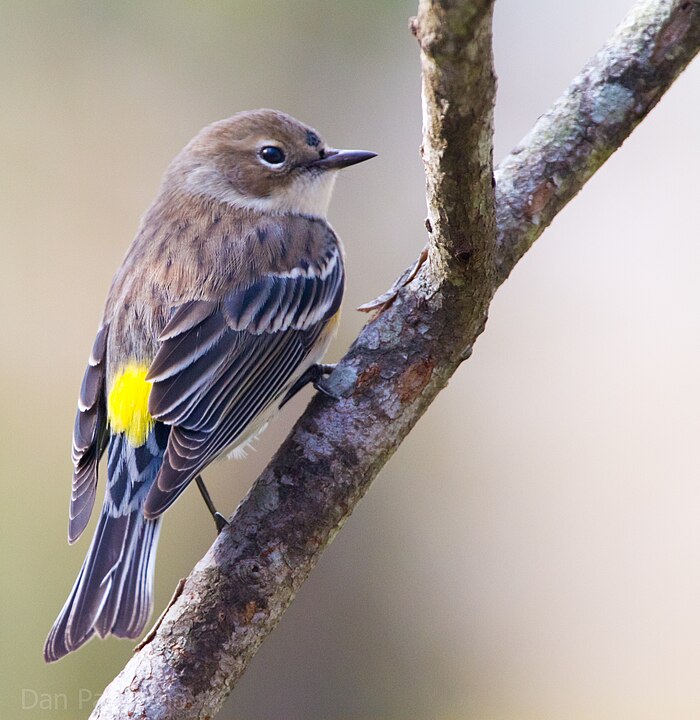 Photo courtesy of Dan Pancamo/CC BY-SA 2.0
Photo courtesy of Dan Pancamo/CC BY-SA 2.0
Females of both the coronata group (myrtle warbler) and the auduboni group (Audubon’s warbler) exhibit a more subdued appearance compared to their vibrant male counterparts. They typically have brown streaking on their fronts and backs, which helps camouflage them in their natural habitats.
Despite the less colorful plumage, they do retain the characteristic yellow rump that gives the species its name. This yellow rump is still noticeable and serves as a distinguishing feature for both male and female yellow-rumped warblers, regardless of their subspecies group. The presence of the yellow rump is a key identifier for this bird species, making it easier to recognize in the field.
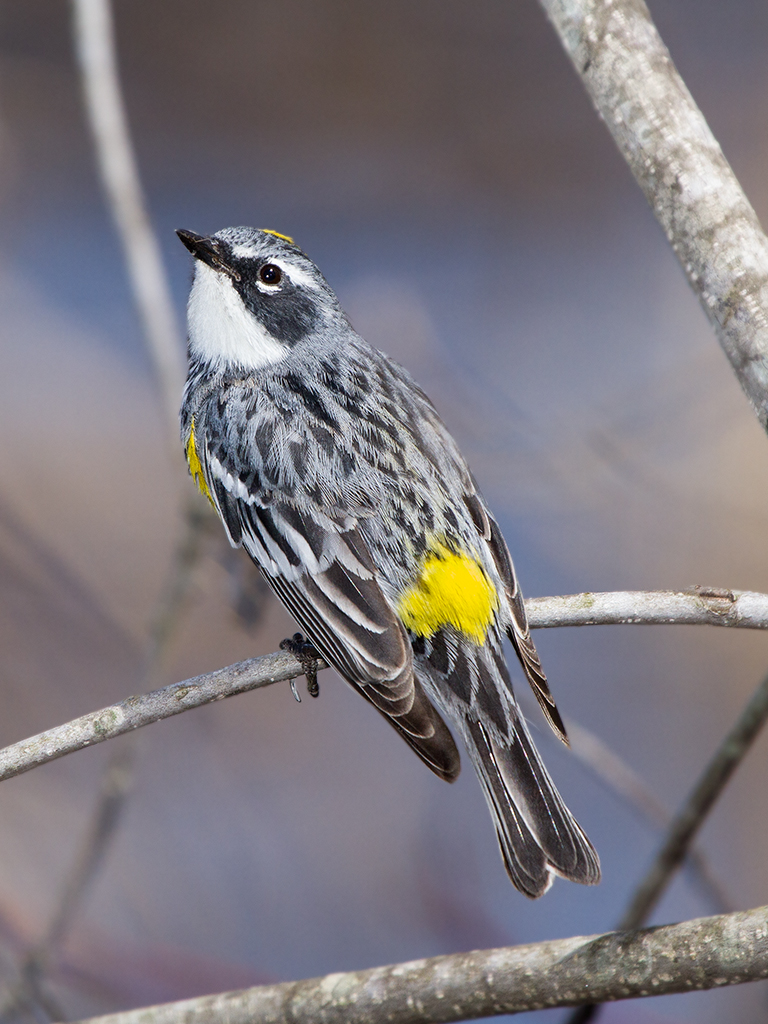 “Myrtle Warbler – Portland, ME” by Chuck Homler is licensed under CC BY-SA 3.0.
“Myrtle Warbler – Portland, ME” by Chuck Homler is licensed under CC BY-SA 3.0.
Its distribution range extends from the Pacific to the Atlantic coasts of the U.S., as well as into Canada and Central America. During the breeding season, the population concentrates in the northern regions, while in winter, the birds migrate southwards to southern North and Central America.
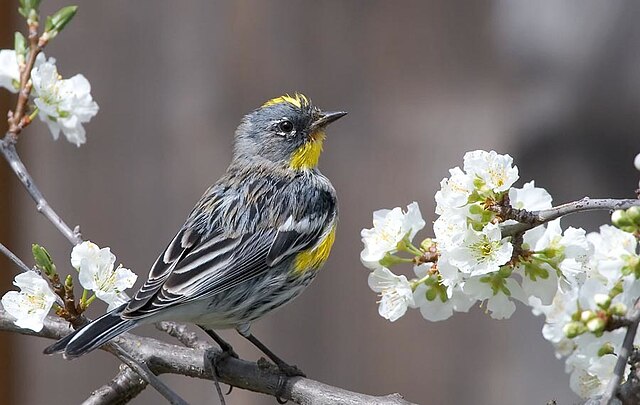 Photo courtesy of Pterzian at English Wikipedia/CC BY-SA 3.0
Photo courtesy of Pterzian at English Wikipedia/CC BY-SA 3.0
This warbler species favors coniferous forests or mixed coniferous-deciduous forests as its breeding habitat. However, during the winter, it can be found in more open areas like shrublands, where it can find ample food resources. Breeding for the yellow-rumped warbler takes place in the central regions of Canada and the Himalayas. During the winter, they migrate to the southern foothills of the Himalayas, as well as to Yunnan, Northeast India, and northern Southeast Asia.
 “Yellow_rumped Warbler (Myrtle)” by Birdman of Beaverton is licensed under CC BY-SA 2.0.
“Yellow_rumped Warbler (Myrtle)” by Birdman of Beaverton is licensed under CC BY-SA 2.0.
The yellow-rumped warbler primarily feeds on insects, but it also consumes fruits, such as juniper berries, especially during the winter months.
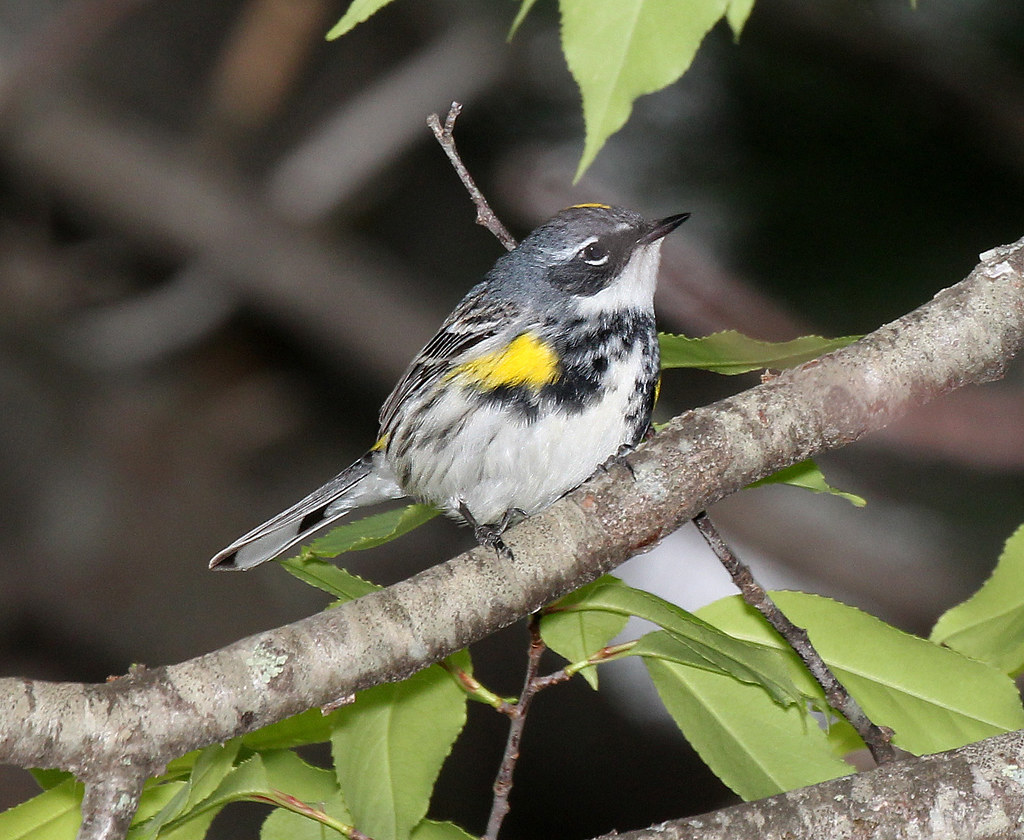 “835 – MYRTLE WARBLER (5-21-2015) barre, worcester co, ma” by Sloalan is marked with CC0 1.0.
“835 – MYRTLE WARBLER (5-21-2015) barre, worcester co, ma” by Sloalan is marked with CC0 1.0.
Yellow-rumped warblers are insectivorous birds and primarily feed on insects such as caterpillars, beetles, ants, spiders, and more. During the winter, they also eat various fruits and seeds, including berries from wax-myrtle, juniper, and other plants. The Audubon and myrtle groups of this species are among North America’s most abundant neotropical migrants.
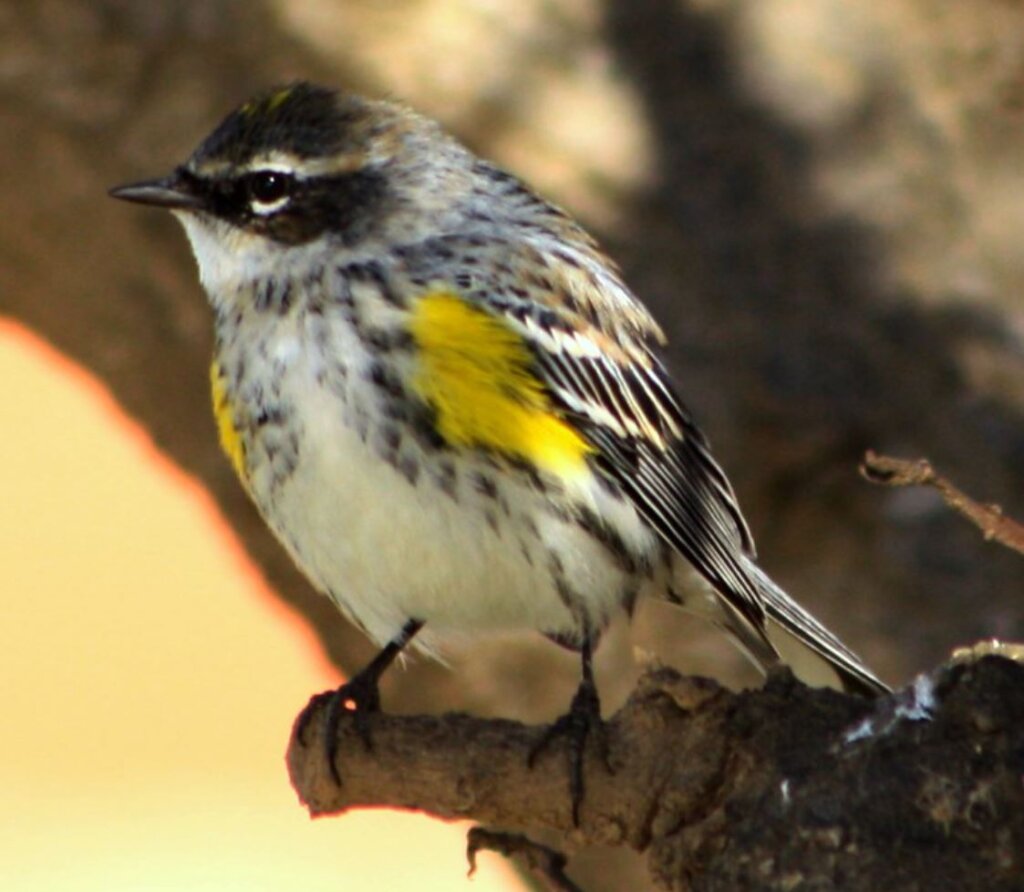 “male Yellow-rumped Warbler (Myrtle Warbler)” (cropped) by 5thLargestinAfrica is licensed under CC BY-SA 2.0.
“male Yellow-rumped Warbler (Myrtle Warbler)” (cropped) by 5thLargestinAfrica is licensed under CC BY-SA 2.0.
During the breeding season, the yellow-rumped warbler resides in coniferous areas or mixed coniferous-deciduous habitats. The nests are cup-shaped and usually built on the horizontal branches of conifer trees. Females build the nests with materials such as twigs, grass, hair, and feathers, skillfully woven to conceal the eggs from predators.
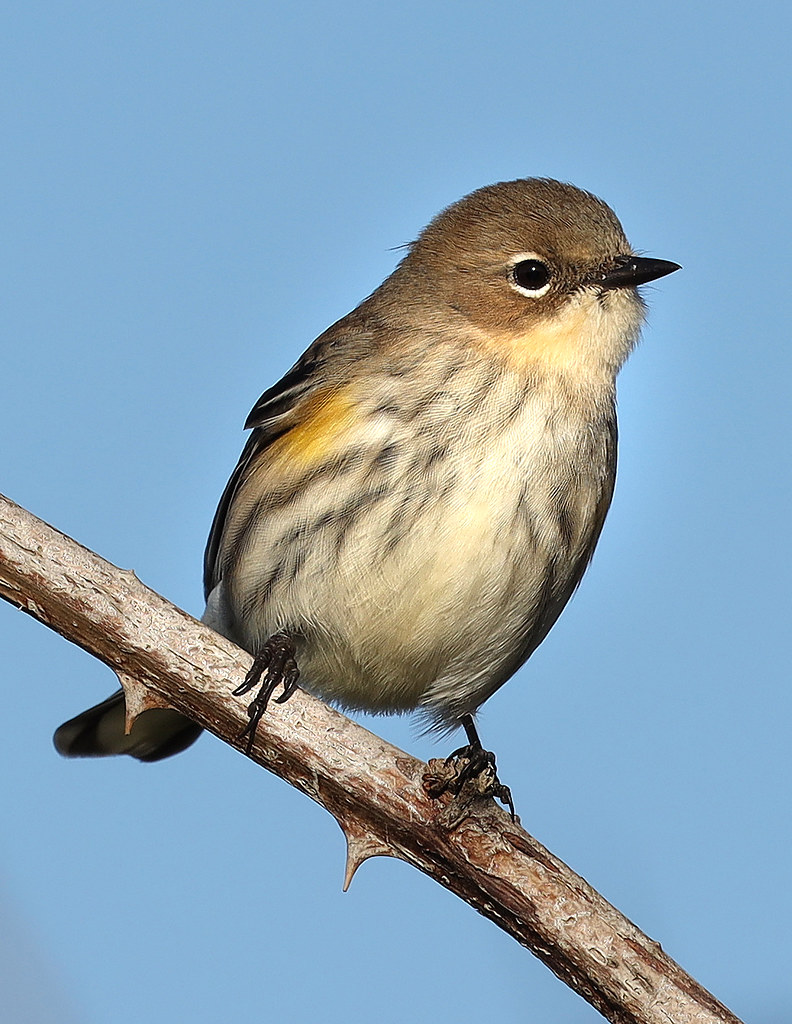 “835 – YELLOW-RUMPED WARBLER (10-14-2021) imm female myrtle, point st george, del norte co, ca -03” by sloalan is marked with CC0 1.0.
“835 – YELLOW-RUMPED WARBLER (10-14-2021) imm female myrtle, point st george, del norte co, ca -03” by sloalan is marked with CC0 1.0.
In terms of habits, the yellow-rumped warbler exhibits migratory behaviors, with some individuals migrating extensively, while others remain in limited areas or do not migrate at all. During migration, they travel at night, relying on skylight polarization to navigate and orient themselves. The species undergoes intentional weight gain and accumulates more fat before migration to prepare for the energy-intensive activity. They communicate through a trill-like song consisting of 4-7 syllables, as well as occasional check or chip call notes.
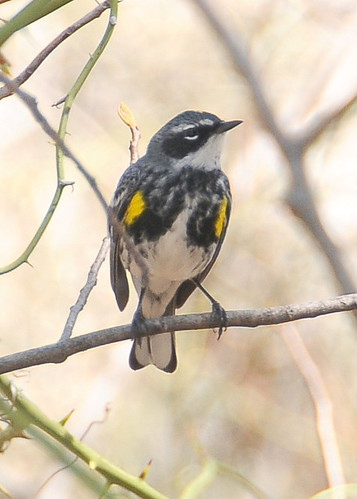 “Myrtle Yellow-rumped Warbler” by Bird Brian is licensed under CC BY 2.0.
“Myrtle Yellow-rumped Warbler” by Bird Brian is licensed under CC BY 2.0.
This bird is regarded as of Least Concern on the IUCN Red List.
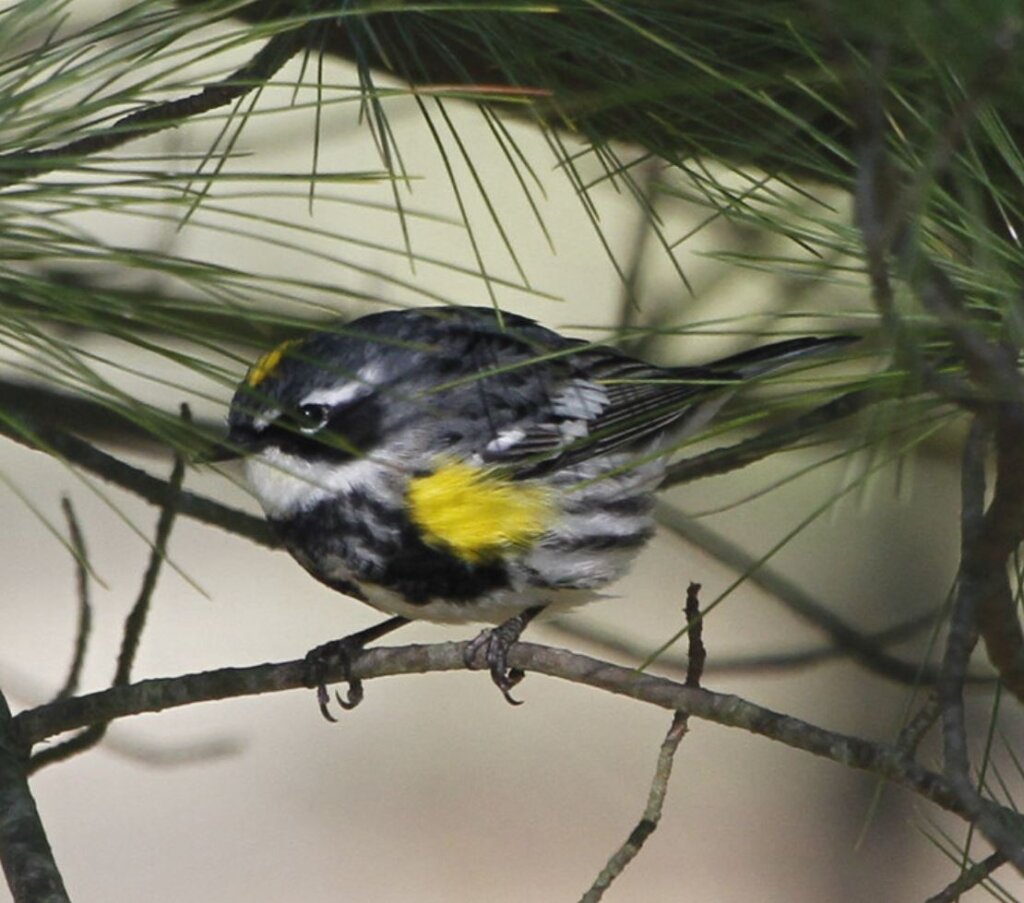 “‘Myrtle’s’ Yellow-rumped Warbler” (cropped) by Paul.J.Hurtado is licensed under CC BY-SA 2.0.
“‘Myrtle’s’ Yellow-rumped Warbler” (cropped) by Paul.J.Hurtado is licensed under CC BY-SA 2.0.
Listen to this bird right here:
This article uses material from Wikipedia.org which is licensed under the GNU Free Documentation License via Copyright Wikipedia. Images on this page are the sole property of the photographers (unless marked as Public Domain). Please read the license and or contact the photographers directly before using them for any purpose. Thank you all.
A Highly Gregarious, Very Vocal Bird Whose Ruby-like Flecks Shimmer Like Jewels On An Otherwise Ash-grey Body!
Please SHARE this article with all your bird-loving friends and family.

